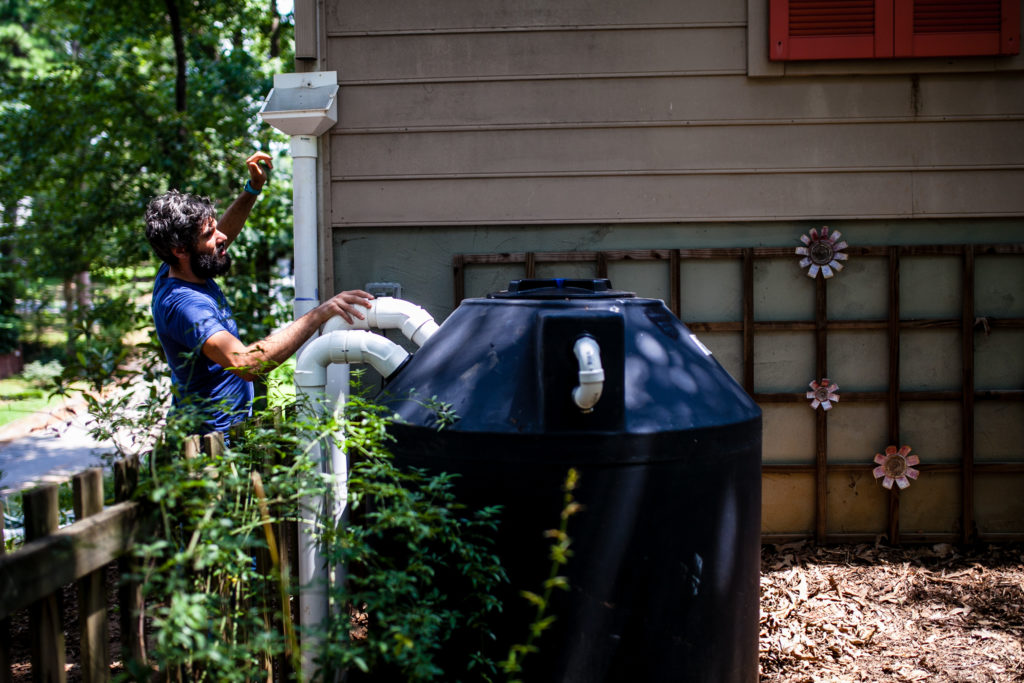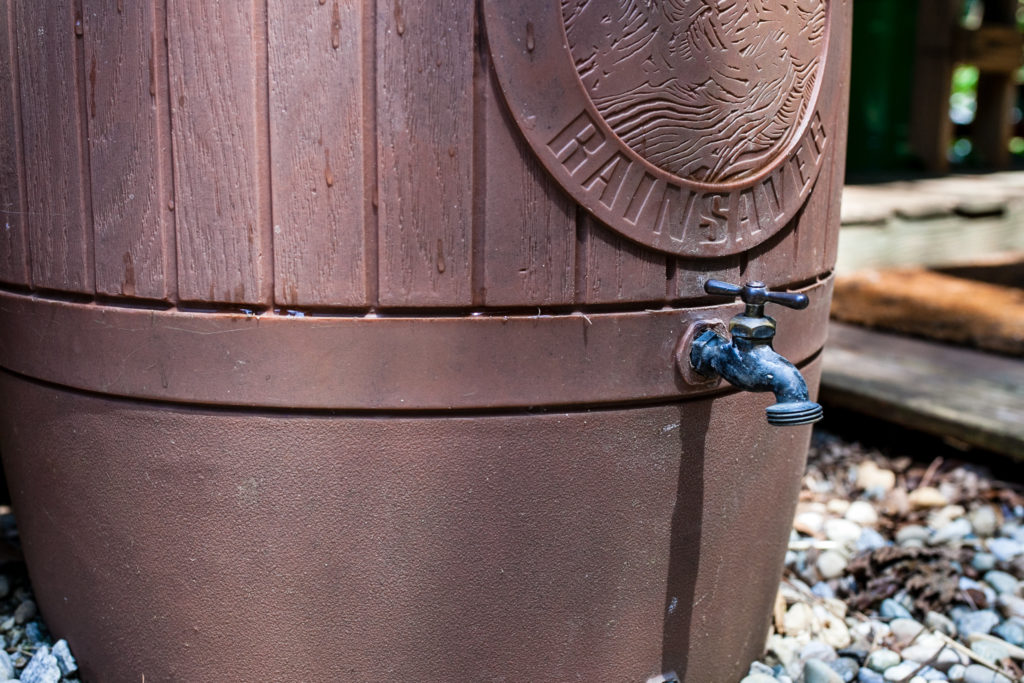
Taking the proper steps to winterize your water systems will help prevent damage during freezing temperatures. (Photo credit: Wild Grain Photography)
Read the steps below and take action now to protect your water systems over winter.
1. DRIP IRRIGATION SYSTEMS: Unscrew all garden hoses (not the micro-irrigation poly tubing), timers, valves and sprayers from all hydrants in the yard and spigots on the house. Roll up your garden hoses and bring them inside. You can leave two-way or splitter valves connected, but make sure the valves are all open. Remove all electronic timers that may be attached to your hydrants or spigots, and store them in a conditioned space. Make sure all hydrants are in an ‘off’ position (handle down).
2. WINTER DRAINS: If you have a rain cistern or downspout system that uses an inverted siphon (your downspouts feed a tank), the downspouts will have a winter drain, which will need to be opened as well. These are usually located in a 6” valve box with a green cover. The valves typically open by turning them counter clockwise. When the valve head is perpendicular to the pipe below it, the valve is closed and open when parallel.
It is only necessary to open the valve approximately 45 degrees in order for the water to drain. It is important to note that the tank will still fill during medium and heavy rain events. Having the valve only partially open creates a bottleneck, so the water backfills the pipes and then enters the tank as normal.
3. CISTERNS: It is also very important to make sure that the tanks stay as full as possible with water, especially if your system has a submersible pump. Full cisterns in the southeast do not freeze, unless they are located high up on a mountain near to and above 3000’. This is because there is not typically enough cold for long enough to freeze such a large mass of water, which means that the pump will not freeze. If the tank is 1/2 or 1/4 empty, though, there is much less of a mass of water, and it is much more likely to freeze, along with the pump.
4. PUMPS: There is no need to unplug submersible pumps, and they will typically still work, even during freezing temperatures, but is important to keep a large mass of water in them. This is usually pretty easy because irrigation requirements are pretty low during the winter!
5. DOWNSPOUT FILTERS: As the leaves are all falling, make sure to clean your downspout filters of leaves and debris, to keep water headed to your tank or rain gardens, and away from your foundation. To do this, snap off the screen, shake it off, and replace. Easy peasy.
